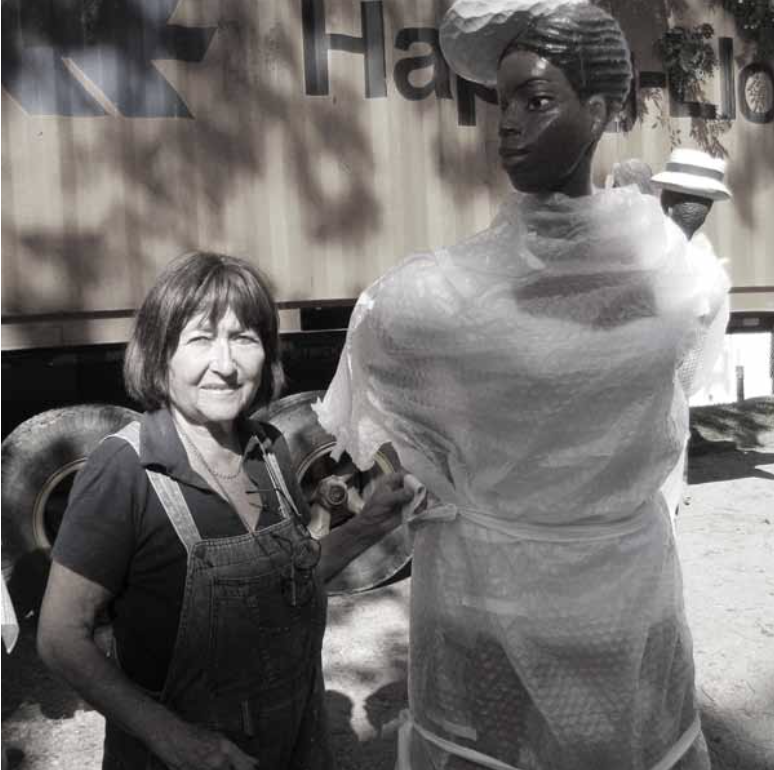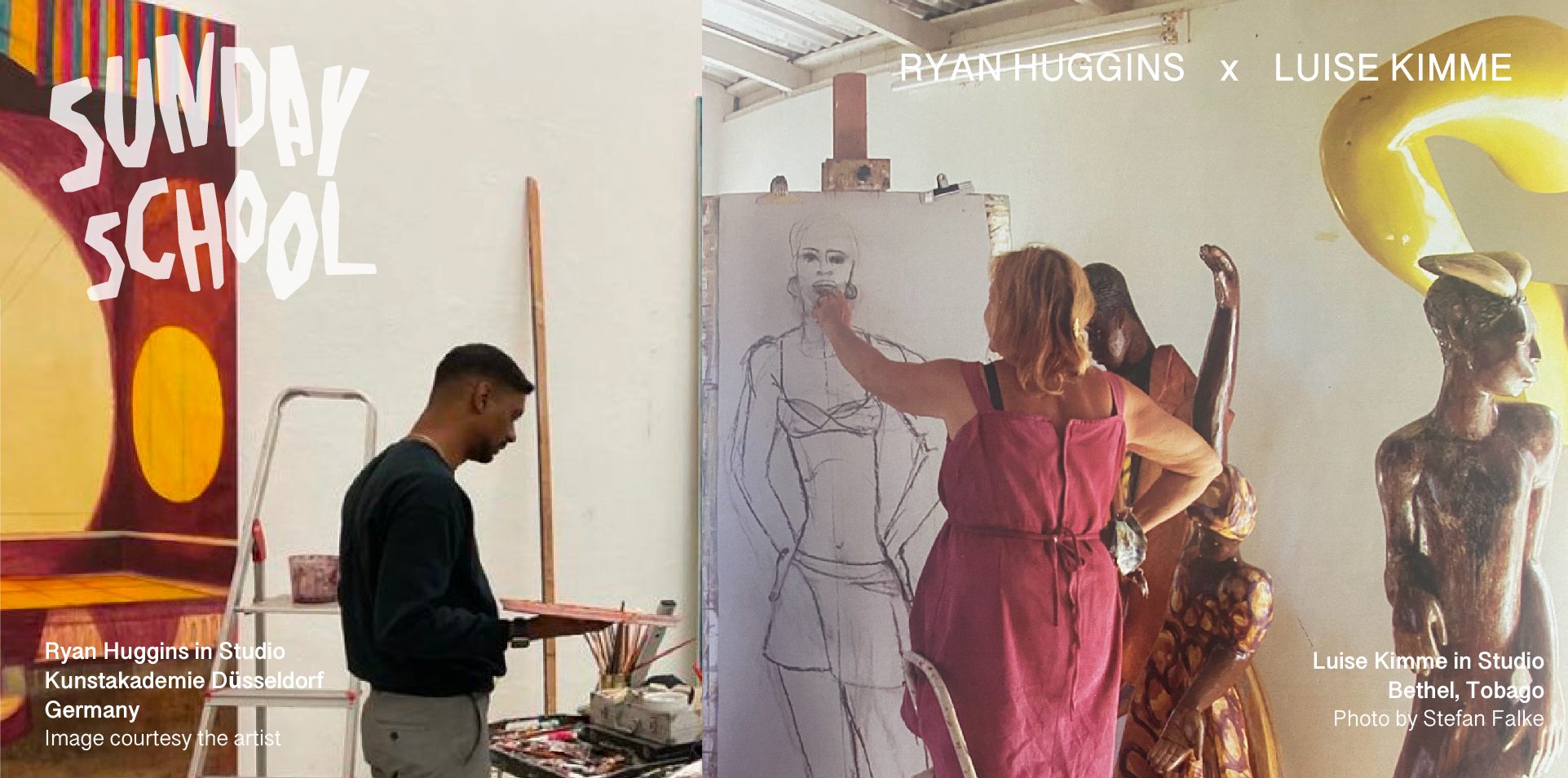
SUNDAY SCHOOL
Paintings and sculpture by Ryan Huggins and Luise Kimme relate to the story of and take inspiration from the community dance, ‘Sunday School‘.
Sunday school, originating in the 70s, is a dance/ball located in the community of Buccoo on the island of Tobago. In its style, Sunday School is fueled by attraction, romance and dance.
Throughout the year, locals and tourists gather close to the shore to play music and dance to popular calypso, reggae and old school dancehall music. The music, usually upbeat in rhythm, is mixed and narrated by a Dj whose main objective is to entice guests to couple and dance sensually along the beach.
Luise Kimme (b. 1939 Bremen, Germany, d. 2013 Tobago) was a noted guest between the late 70s and 90s, after migrating from Düsseldorf, Germany. Known for her life sized wooden, bronze sculptures and reliefs, Kimme’s love for dance, such as the Rumba, was an evident source of inspiration for her work. The wooden works are sculpted and fashioned into Tobago’s native people showcasing their gestural dance moves and vibrant clothing.
Ryan Huggins’ (b.1991 Trinidad) interest in Sunday School was discovered later in the mid 2000s. A native to Trinidad and Tobago, Huggins is culturally educated to the upbeat rhythms and sensual dancing of Caribbean music and its significance to the native people. His paintings draw inspiration from the sculptures that were built and fashioned by the late Luise Kimme but exercise emphasis on their diverse form, gestures and emotions.
This unique exhibition features several rare, life sized wooden sculptures by Luise Kimme whose work is graciously on loan from private collectors to the gallery for public viewing. In addition, are five large figurative paintings by Ryan Huggins.
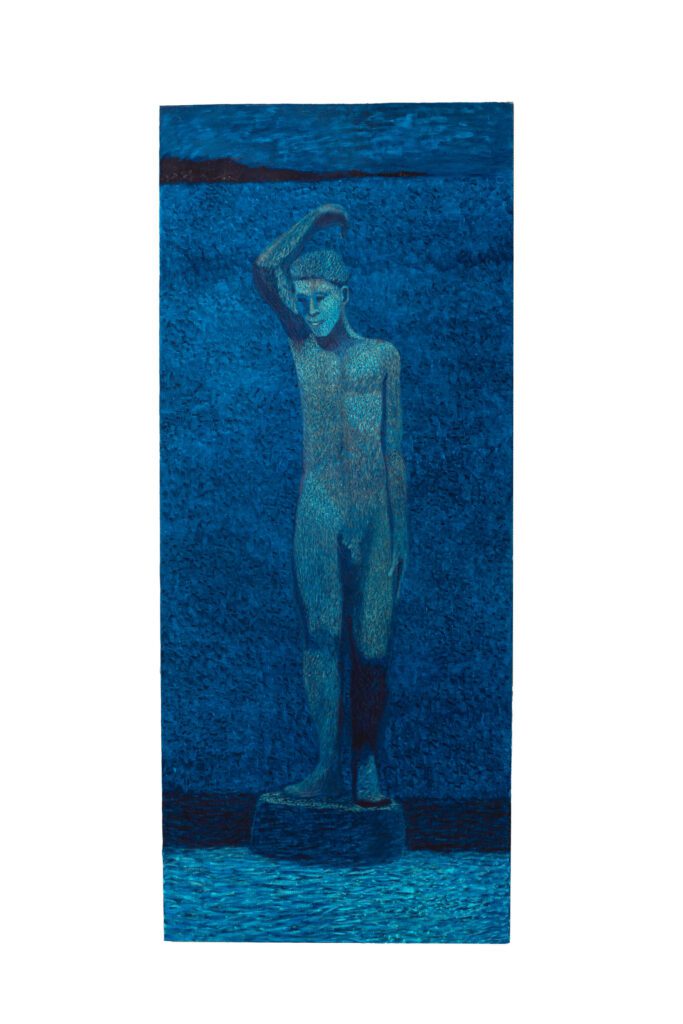

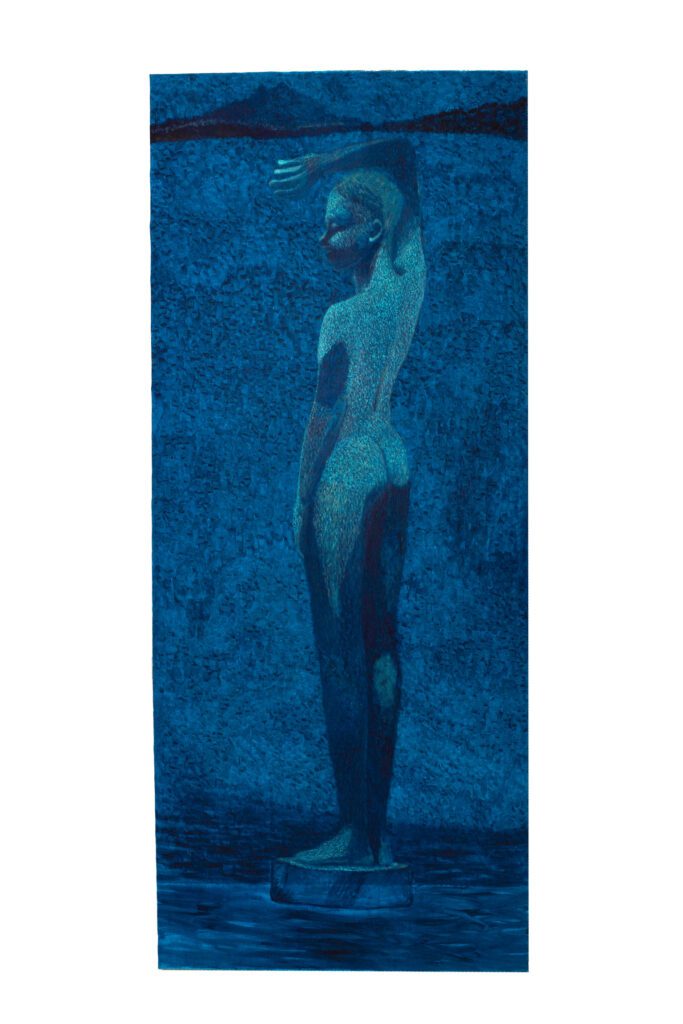

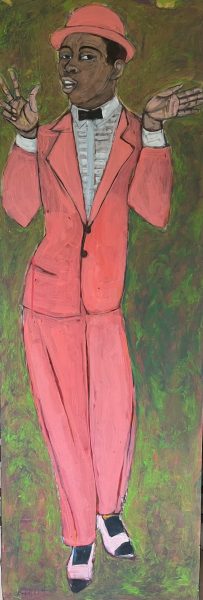

Luise Kimme
190 x 65.5 cm
Paint on paper, mounted on hardboard. Coated with UV protective varnish.
2007
Luise Kimme
191.5 x 71 cm
Paint on paper, mounted on hardboard. Coated with UV protected varnish.
2007
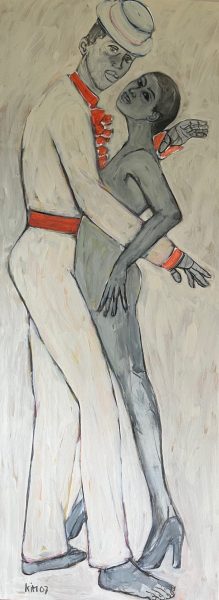

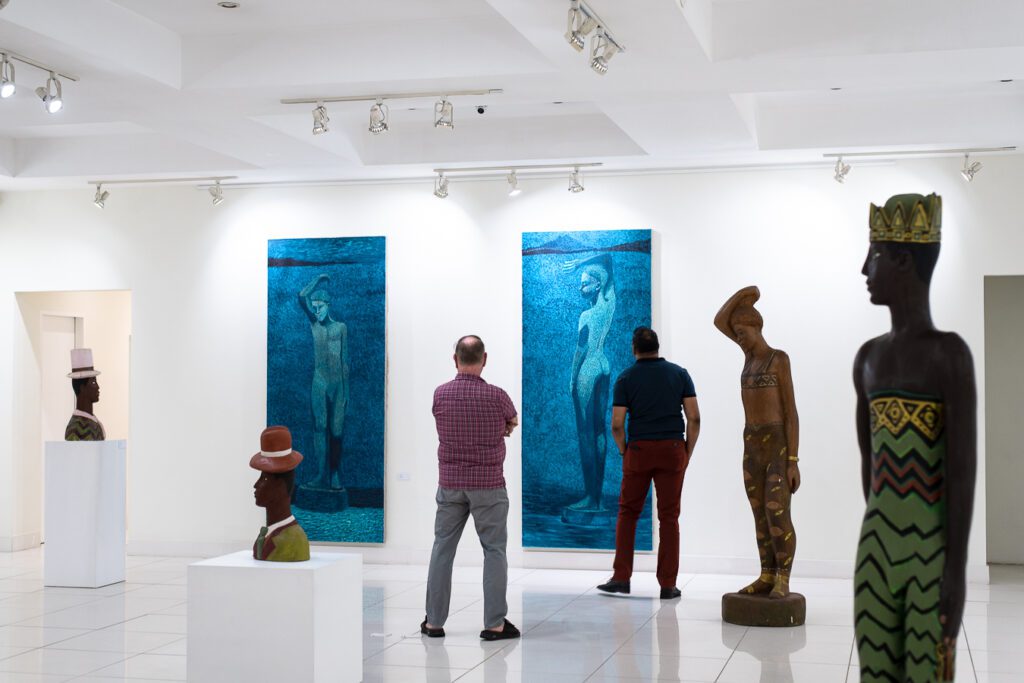

Janice Derrick
2017
Sterling silver planished brooch with gold plate and small fine silver planished bowl
Janice Derrick
2017
Sterling silver planished brooch with gold plate and small fine silver planished bowl
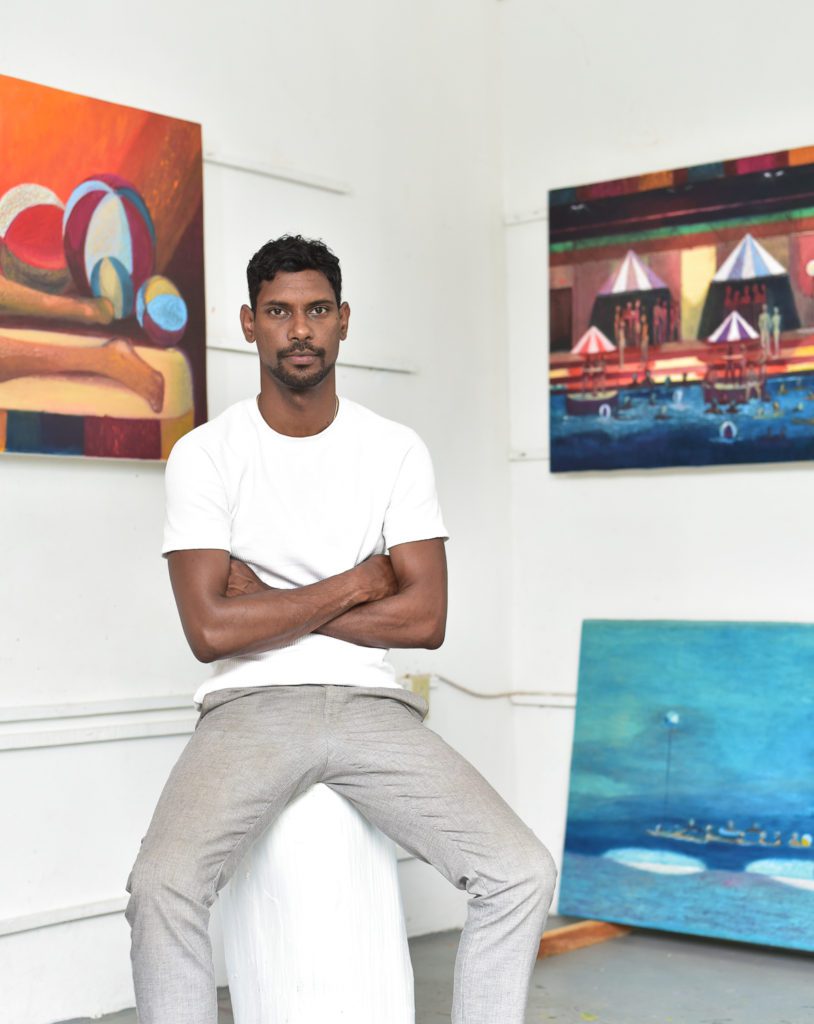

Ryan Huggins (b. 1991) Trinidad, lives and works in Düsseldorf.
Ryan Huggins is a figurative painter whose paintings are a fusion of ideas surrounding alternative youth sub cultures within queer communities. Huggins examines the vocabulary on queer references and terminologies in relation to body, social identity and gender as a growing language.
I started making figurative carvings from whole trees in Tobago, where I am free to do what I like.
There is an assumption in England and Germany about what art is, and figurative work, carvings, ceramics are not serious art. There is a prejudice against folk-lore, religious, ethnic and decorative work.
And messages or stories in work of art are labelled literal, and therefore not art.
So I have been lucky to work very far away from any art scene, and to develop my own ideas. First I drew, painted and carved nature studies in Tobago. Then I studied the folklore of Trinidad and Tobago, and carved those figures.
I have always been a passionate dancer, and I love ballet in all forms, particularly Nijinsky, the Russian genius of the Ballets Russes around 1911. I still carve figures from those ballets. Recently in Cuba I have made sculptures from wax, which totally liberates shapes and possibilities from the limits of tree trunks. However, once a year in May or June I carve tree trunks in the forest of Germany.
I went to Suriname and Guyana to study Maroon art, and incorporated those designs into my house. The local Baptist religions have a very close resemblance
to the Voodoo ceremonies I saw in Haiti, and to the Orisha religions of Africa. When I came to Cuba I saw people dressed in white , witnessed the rumba, saw Orisha shrines in most houses, and am learning about that religion.
It is quite wonderful if a work of art has more meaning than just l’art pour l’art, which is so predominant in European art. But now from the former communist countries of the East, Russia and East Germany, have risen well-trained artists who paint pictures with stories in historical, pictorial, literal decorative styles- all is allowed and well fashionable. I admire the work i see in Cuba, and the people I am lucky to be working with at the Taller Cultural in Santiago de Cuba. Their work tells a story, or carries a message, and their training and cultural background is so rich and undiluted that for me Cuba is the centre of the arts in the Americas.
I show my work every two years in Trinidad, and my museum in Tobago is open every Sunday for four hours. I get a lot of response, and the occasional sale, without having to exhibit all over the place, which, for a sculptor whose main material is wood, is not possible; sculpture from solid trunks cannot take different temperatures without opening.
– Luise Kimme
Bolero, 2008
